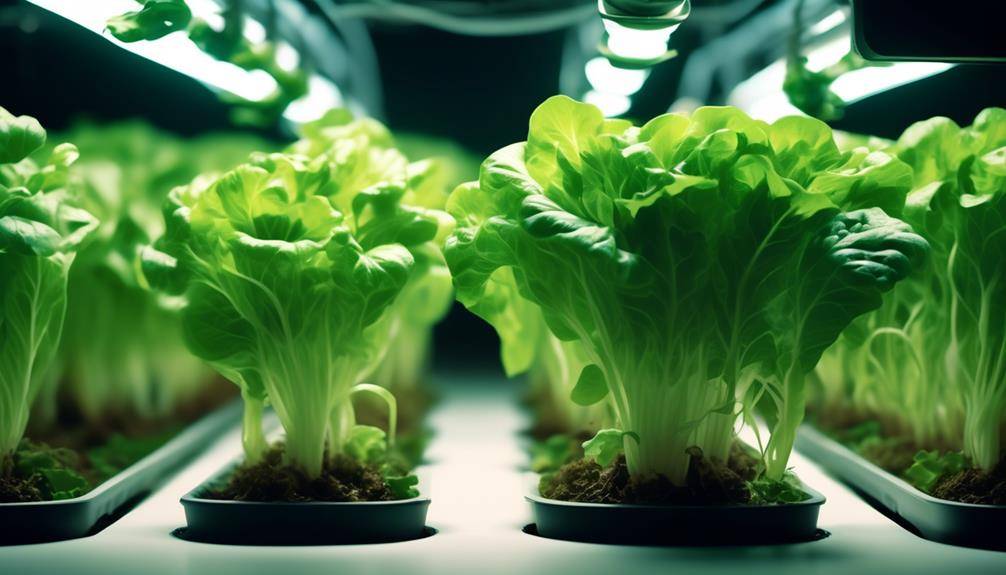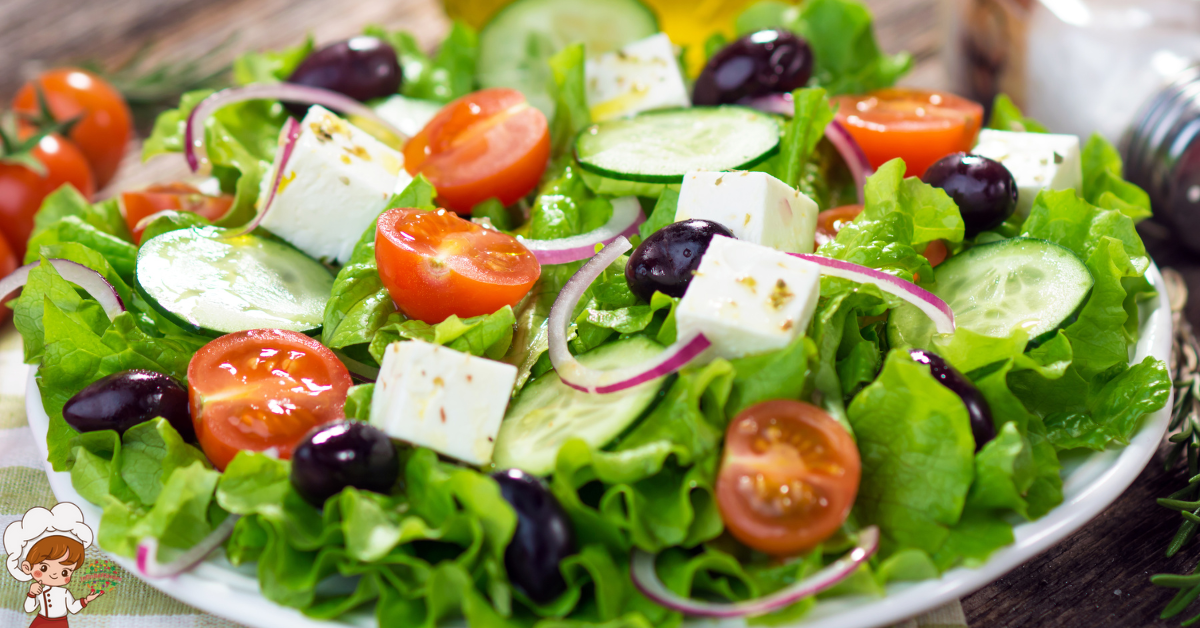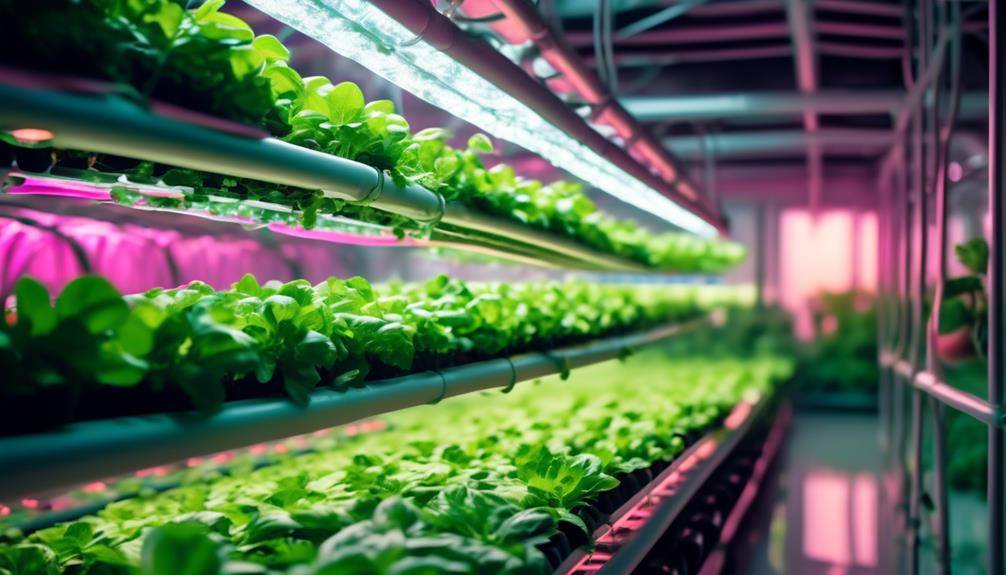Amazing DIY Hydroponic Systems For Home Farming

Are you tired of the limitations that traditional gardening presents?DIY Hydroponic Systems For Home, Perhaps you’re looking for a more efficient and sustainable way to grow your own food at home. If so, you might want to explore the world of DIY hydroponic systems. These innovative gardening setups offer a euphemistic alternative to soil-based farming, allowing you to cultivate plants without the constraints of traditional methods. But how exactly do these systems work, and what are the benefits they bring? In this discussion, we will uncover the secrets behind DIY hydroponic systems, from choosing the right setup to harvesting your own homegrown crops. Get ready to embark on a journey that will revolutionize the way you approach home farming.
Benefits of Hydroponic Gardening
One of the main advantages of hydroponic gardening is that it allows for precise control over nutrient delivery to plants. Unlike traditional soil-based gardening, hydroponic systems provide a more efficient way of nourishing plants by directly delivering the necessary nutrients to their roots. This precise control over nutrient delivery is one of the key benefits of hydroponics.
One of the benefits of hydroponic gardening is increased plant growth and yield. With the ability to closely monitor and adjust nutrient levels, hydroponic systems provide plants with an ideal environment for growth, resulting in faster and healthier plant development. This can lead to higher crop yields compared to traditional methods.
Another advantage of hydroponic farming is water conservation. Hydroponic systems use significantly less water compared to soil-based gardening, as the water is recirculated within the system instead of being lost through evaporation or runoff. This makes hydroponics a more sustainable and environmentally friendly option, especially in areas experiencing water scarcity.
Hydroponic systems also offer better control over pest and disease management. By eliminating the use of soil, which can harbor pests and diseases, hydroponic gardening reduces the risk of plant infections. Additionally, the controlled environment of hydroponics makes it easier to detect and respond to any issues that may arise, minimizing the impact on plant health.
Furthermore, hydroponic agriculture allows for year-round growing. With the ability to control temperature, lighting, and other environmental factors, hydroponic systems enable farmers to grow crops regardless of seasonal limitations. This provides a consistent and reliable food supply, promoting food security and reducing dependence on external sources.
Choosing the Right Hydroponic System
When it comes to choosing the right hydroponic system for your home farming needs, there are several factors to consider. Firstly, you need to be familiar with the different types of hydroponic systems available, such as nutrient film technique (NFT), deep water culture (DWC), and aeroponics. Each system has its own pros and cons, so it’s important to weigh these factors against your specific requirements and limitations. By carefully considering these points, you can make an informed decision and set up a successful hydroponic system for your home.
Types of Hydroponic Systems
To choose the right hydroponic system for your home farming needs, it is important to consider the specific requirements and constraints of your space, as well as the types of plants you wish to grow. Two popular types of hydroponic systems that you can explore are vertical hydroponic systems and aeroponic systems.
Vertical hydroponic systems are designed to maximize space utilization. These systems utilize vertical towers or shelves to grow plants in a compact manner. They are ideal for small spaces or areas with limited floor space. By utilizing gravity, water and nutrients are circulated through the system, providing the plants with the necessary resources for growth.
On the other hand, aeroponic systems are known for their efficiency in water usage. These systems deliver nutrients and water directly to the plant roots as a fine mist or spray. This method promotes oxygenation and nutrient absorption, resulting in faster growth rates and higher yields. Aeroponic systems are also space-saving and can be implemented in both indoor and outdoor environments.
When choosing between vertical hydroponic and aeroponic systems, consider factors such as space availability, plant selection, and personal preference. Each system has its own advantages and limitations, so it is important to select the one that best suits your needs.
Factors to Consider
Vertical hydroponic systems and aeroponic systems each have their own advantages and limitations, but when it comes to choosing the right hydroponic system for your home farming needs, there are several important factors to consider. Firstly, you need to consider the available space you have. Vertical hydroponic systems are great for small spaces as they utilize vertical space efficiently, while aeroponic systems require more horizontal space. Secondly, consider the type of plants you want to grow.
Leafy greens, like lettuce and spinach, thrive in vertical systems, while fruiting plants, like tomatoes and peppers, do well in aeroponic systems. Lastly, think about the equipment needed. Vertical systems require vertical towers or shelves, while aeroponic systems need misters or sprayers to deliver nutrients to the roots. By considering these factors, you can choose the right hydroponic system that suits your home farming needs.
Pros and Cons
One important aspect to consider when choosing the right hydroponic system for your home farming needs is evaluating the pros and cons of each option. Hydroponic systems offer several advantages over traditional soil-based farming methods. They allow for efficient use of space, as the plants can be grown vertically, maximizing the available area. Hydroponic systems also use less water compared to soil farming, making them more environmentally friendly.
Additionally, these systems provide better control over nutrient levels and pH, resulting in healthier and more productive plants. However, there are also disadvantages to consider. Hydroponic systems require a higher initial investment, as they involve purchasing specialized equipment and supplies. They also require more monitoring and maintenance to ensure optimal conditions for plant growth. Lastly, power outages or equipment failures can pose a risk to the plants’ survival.
Selecting the Ideal Plants for Hydroponics
When selecting plants for hydroponics, it is crucial to consider their growth requirements and suitability for a soilless cultivation system. The hydroponic plant selection process involves choosing appropriate crops that will thrive in a controlled environment without the use of soil. This method of growing plants allows for efficient nutrient uptake and optimal growth conditions.
One important factor to consider when selecting plants for hydroponics is their adaptability to the absence of soil. Certain plants are better suited for this type of growing system due to their ability to absorb nutrients directly from the water. Leafy greens like lettuce, spinach, and kale are popular choices for hydroponics because they have shallow root systems and grow relatively quickly.
Herbs such as basil, mint, and cilantro also do well in hydroponic systems. They require less space and can be grown vertically, making them suitable for home farming. Additionally, strawberries and tomatoes can be grown successfully in hydroponics, as they produce high yields and require less space compared to traditional soil-based methods.
Another important consideration is the plant’s nutrient requirements. Different plants have varying needs for nutrients such as nitrogen, phosphorus, and potassium. It is essential to choose plants that have similar nutrient requirements to ensure a balanced nutrient solution in the hydroponic system. Conducting research on the nutritional needs of different plants will help in selecting the most appropriate crops for hydroponics.
Setting Up the Hydroponic Reservoir
To successfully implement a hydroponic system for home farming, it is crucial to properly set up the hydroponic reservoir, ensuring a well-maintained and nutrient-rich environment for your plants. The hydroponic reservoir is where the nutrient solution is stored and circulated to provide essential nutrients to your plants. Here are some key steps to follow when setting up your hydroponic reservoir:
- Choose the right container: Select a food-grade container that is large enough to hold an adequate amount of nutrient solution for your plants. Make sure it has a lid to prevent evaporation and contamination.
- Clean and sterilize: Before using the reservoir, thoroughly clean and sterilize it to eliminate any potential pathogens or contaminants. Use a mild detergent and rinse it thoroughly to remove any residue.
- Mix the nutrient solution: Follow the instructions provided by the manufacturer to mix the appropriate amount of nutrients with water. Maintain the pH level of the solution within the optimal range for your plants.
- Monitor and adjust: Regularly check the nutrient levels and pH of the solution in your reservoir. Ensure that the nutrient levels are within the recommended range and adjust them as needed. Monitor the pH level and make necessary adjustments to maintain a balanced environment for your plants.
- Prevent and troubleshoot issues: To maintain the health of your plants, it is important to regularly inspect the reservoir for any signs of algae growth, root rot, or nutrient deficiencies. Take necessary steps to address these issues promptly, such as adding an algaecide, improving aeration, or adjusting nutrient levels.
Understanding Nutrient Solutions for Hydroponics
Understanding the composition and importance of nutrient solutions is essential for successfully implementing a hydroponic system for home farming. Nutrient solutions provide the necessary elements for plant growth and development in a soilless environment. By understanding the key components of nutrient solutions, you can ensure that your plants receive the optimal nutrition they need to thrive.
A properly balanced nutrient solution typically contains macronutrients, micronutrients, and other essential elements. Macronutrients, such as nitrogen, phosphorus, and potassium, are needed in larger quantities, while micronutrients, such as iron, manganese, and zinc, are required in smaller amounts. These elements play crucial roles in various plant functions, including photosynthesis, respiration, and nutrient uptake.
Nutrient deficiency management is crucial in hydroponics to prevent plant health issues. Monitoring the nutrient levels in your solution and regularly checking the pH and electrical conductivity (EC) can help you identify and address any nutrient deficiencies. Symptoms of nutrient deficiencies can include yellowing leaves, stunted growth, and poor fruit or flower development. By understanding the specific nutrient requirements of different plants, you can adjust your nutrient solution accordingly and prevent potential problems.
Troubleshooting common nutrient solution problems is also essential for maintaining a healthy hydroponic system. Issues such as nutrient lockout, nutrient imbalances, and pH fluctuations can impact plant growth and yield. Regularly testing and adjusting your nutrient solution, maintaining proper pH levels, and ensuring good water quality can help prevent and resolve these problems.
Ph and EC Levels in Hydroponic Systems
Maintaining proper pH and electrical conductivity (EC) levels in hydroponic systems is crucial for ensuring optimal nutrient uptake and plant health. Monitoring equipment is essential for accurately measuring and adjusting these levels to create an optimal growing environment. Here are three key points to consider when managing pH and EC levels in your hydroponic system:
- Importance of pH: pH refers to the acidity or alkalinity of the nutrient solution. Most plants thrive in a slightly acidic to neutral pH range of 5.5 to 6.5. Deviations from this range can impact nutrient availability and plant growth. Regularly monitoring pH levels using a pH meter or test kit is essential to prevent nutrient deficiencies or toxicities.
- Role of Electrical Conductivity (EC): EC measures the concentration of dissolved salts in the nutrient solution, indicating its strength. It is a measure of the nutrient solution’s ability to conduct electricity. Maintaining the appropriate EC levels ensures that plants receive an adequate supply of nutrients. EC meters are used to measure the conductivity of the nutrient solution, allowing growers to adjust the nutrient strength accordingly.
- Nutrient Management: Proper nutrient management involves adjusting the pH and EC levels based on the specific needs of the plants being grown. This can be achieved by adding pH-adjusting solutions or acids/bases to regulate pH, and by adjusting the nutrient solution’s strength by dilution or by adding additional nutrients. Regular monitoring and adjustment of pH and EC levels are crucial to prevent nutrient imbalances and ensure optimal plant growth and productivity.
Building a DIY Deep Water Culture System
To build a DIY deep water culture system, you will need a few key materials. These include a reservoir, an air pump, an air stone, net pots, a grow tray, a water level indicator, and a pH meter. With these materials in hand, you can follow step-by-step instructions to assemble your deep water culture system and start growing plants hydroponically in no time.
Materials Needed
You will need specific materials to build a DIY Deep Water Culture system for hydroponic farming at home. Here is a list of materials you will require:
- Setting up a hydroponic reservoir:
- A reservoir tank (preferably opaque to prevent the growth of algae)
- Air stones and an air pump for oxygenation
- PVC pipes and fittings for plumbing
- A water pump to circulate the nutrient solution
- Understanding nutrient solutions:
- pH and EC meters for monitoring pH and EC levels
- pH adjusters and nutrient solutions for maintaining optimal nutrient levels
- DIY Deep Water Culture system construction:
- A container for the plants to sit in, such as a bucket or a grow tray
- Net pots to hold the plants in place
- An air stone and air pump for oxygenation
Other hydroponic systems you can consider constructing include a nutrient film technique system, drip irrigation hydroponic system, ebb and flow hydroponic system, or a wick system for hydroponics. Additionally, you will need to maintain the water temperature and lighting requirements, ensuring the optimal light spectrum for plant growth. Regular pH level monitoring and adjusting will be necessary, and once your crops are ready, you can harvest them from your hydroponic system.
Step-By-Step Instructions
To start building your DIY Deep Water Culture system for hydroponic farming at home, gather the necessary materials mentioned in the previous section. Once you have all the materials ready, follow these step-by-step instructions to set up your system. First, drill holes in the lid of the container to hold the net pots. Then, place the air stone in the bottom of the container and connect it to an air pump. Fill the container with nutrient-rich water, making sure the water level reaches the bottom of the net pots.
Now, it’s time to choose suitable plants for your hydroponic system. Opt for plants that thrive in water-based environments, such as lettuce, herbs, or leafy greens. Lastly, remember to troubleshoot common issues like pH level fluctuations, inadequate oxygenation, or nutrient imbalances to ensure the success of your DIY Deep Water Culture system.
Constructing a Nutrient Film Technique System
When constructing a Nutrient Film Technique (NFT) system, it is crucial to ensure proper nutrient flow and optimal plant growth. The Nutrient Film Technique (NFT) is a hydroponic system that uses a thin film of nutrient-rich water to continuously flow across the roots of plants. This setup offers several benefits for home farming enthusiasts:
- Water Conservation: NFT systems are highly efficient in water usage compared to traditional soil-based gardening. The continuous flow of nutrient-rich water allows for minimal water loss through evaporation or runoff.
- Maximized Nutrient Absorption: The constant flow of nutrient solution in NFT systems ensures that plants have a steady supply of essential nutrients. This promotes robust growth and maximizes nutrient absorption, leading to healthier and more productive plants.
- Space Efficiency: NFT systems are ideal for small spaces as they require minimal growing media. The plants’ roots are suspended in a narrow channel, allowing for a high plant density and efficient use of space.
To construct a Nutrient Film Technique system, follow these steps:
- Set up the Channel: Use a durable material such as PVC or food-grade plastic to create a channel with a slight slope. This slope ensures that the nutrient solution flows smoothly across the roots.
- Install the Pump: Place a submersible pump in a reservoir filled with nutrient solution. Connect the pump to the channel using flexible tubing.
- Add the Plants: Place net pots or grow cups with seedlings or clones into the channel, ensuring that the roots are submerged in the flowing nutrient solution.
Remember to regularly monitor the pH and nutrient levels of the solution to maintain optimal conditions for your plants. With proper setup and maintenance, a Nutrient Film Technique system can provide an efficient and productive hydroponic gardening experience in your own home.
Creating a Drip Irrigation Hydroponic System
Continuing our exploration of hydroponic systems, let’s now focus on creating a drip irrigation hydroponic system, which offers another efficient and effective method for home farming enthusiasts. Drip irrigation is a type of hydroponic system that delivers nutrient-rich water directly to the plant roots in a slow and steady manner. This method offers several benefits for home farming.
One of the key benefits of drip irrigation is water conservation. Unlike traditional soil-based farming, where water can be lost through evaporation or runoff, drip irrigation delivers water directly to the plants, minimizing wastage. This not only saves water but also reduces the risk of over-watering, which can lead to root rot and other plant diseases.
Setting up a drip irrigation hydroponic system involves a few key components. First, you will need a water reservoir to hold the nutrient solution. This can be a simple bucket or a more sophisticated container with a pump. Next, you will need a network of tubes or pipes to deliver the water to the plants. These tubes can be connected to individual drippers or emitters that release water droplets near the plant roots. Additionally, a timer can be used to automate the watering process, ensuring that the plants receive a consistent water supply.
To set up your drip irrigation system, start by securing the water reservoir and connecting it to the tubes or pipes. Place the drippers or emitters near the base of each plant, ensuring that they are positioned to deliver water directly to the roots. Finally, set the timer according to the watering needs of your plants.
Designing a Ebb and Flow Hydroponic System
Designing an Ebb and Flow Hydroponic System requires careful consideration of the components and setup to ensure optimal plant growth and nutrient delivery. This type of hydroponic system, also known as a flood and drain system, offers several benefits that make it a popular choice among home farmers.
Here are some key points to keep in mind when setting up an Ebb and Flow Hydroponic System:
- Components: To build this system, you will need a growing tray or table, a submersible pump, a reservoir, and a timer. The growing tray should be filled with a growing medium, such as gravel or perlite, to support the plants and allow for proper drainage.
- Setup: The first step is to place the growing tray on a sturdy table or stand. Connect the submersible pump to the timer and place it in the reservoir. The timer will control the frequency and duration of the flooding and draining cycles. Make sure to position the pump in a way that allows water to flow evenly across the tray.
- Benefits: Ebb and Flow Hydroponic Systems offer several advantages. Firstly, they provide plants with a constant supply of oxygen due to the periodic flooding and draining cycles. This promotes healthy root growth and prevents root rot. Secondly, these systems are highly customizable, allowing you to adjust the flooding and draining intervals according to the specific needs of your plants. Lastly, they are relatively easy to set up and maintain, making them suitable for beginners.
Building a Wick System for Hydroponics
Now let’s explore the components of a wick system for hydroponics and the step-by-step assembly process. The wick system typically consists of a reservoir, wick material, growing medium, and plants. To assemble the system, start by placing the wick material in the reservoir, making sure it reaches the growing medium. Then, add the growing medium and carefully insert the plants. This simple and effective system allows for passive water and nutrient delivery to the plants, making it an excellent choice for home farming.
Wick System Components
To build a wick system for hydroponics, you will need essential components that facilitate the passive movement of water and nutrients to the plants. These components are crucial for the successful setup and functioning of the wick system. Here are the key components you will need:
- Growing container: This is where you will place your plants and the wick system setup. Choose a container that is suitable for the size and number of plants you plan to grow.
- Wick material: The wick is responsible for drawing up the water and nutrients from the reservoir to the plants. Common wick materials include cotton, nylon, or polyester.
- Reservoir: This is where the water and nutrient solution is stored. It should be large enough to hold an adequate amount of solution for your plants.
Step-By-Step Wick System Assembly
To assemble a wick system for hydroponics, you will need to gather the necessary materials and follow a step-by-step process for successful setup and functionality. The wick system is a simple and effective method for growing plants without the use of soil. It consists of a container with a growing medium, a wick, and a reservoir of nutrient solution. The wick, made of absorbent material such as cotton or nylon, acts as a conduit for delivering the nutrient solution to the plant roots.
To start, choose a suitable container and fill it with a growing medium like perlite or coconut coir. Place the wick in the container, making sure it reaches the bottom and extends into the reservoir. Finally, fill the reservoir with the nutrient solution, ensuring that the wick is submerged. The benefits of a wick system in hydroponics include its simplicity, low cost, and ability to work well with smaller plants.
Maintaining Water Temperature in Hydroponics
Maintaining an optimal water temperature is crucial for the successful cultivation of plants in hydroponic systems. The temperature of the water directly affects the growth and development of the plants, as well as the overall health of the system. To ensure the water temperature remains within the desired range, there are several important factors to consider.
- Water circulation: Proper water circulation is essential for maintaining a consistent temperature throughout the hydroponic system. A well-designed system should have a pump that continuously circulates the water, preventing stagnant areas and promoting even distribution of heat. This helps to avoid temperature variations that can negatively impact plant growth.
- Insulation techniques: Insulating the hydroponic system can help to regulate the water temperature. One effective method is to use insulation materials such as foam boards or reflective films to cover the reservoir and pipes. This helps to prevent heat loss and minimize temperature fluctuations caused by external factors. Additionally, insulating the system can also reduce energy consumption by minimizing the need for heating or cooling.
- Temperature monitoring: Regularly monitoring the water temperature is essential to ensure it stays within the optimal range for plant growth. This can be done using a thermometer or a temperature sensor installed in the hydroponic system. By keeping a close eye on the temperature, any fluctuations or deviations can be quickly identified and addressed.
Maintaining the water temperature in a hydroponic system is crucial for the success of your plants. By ensuring proper water circulation, utilizing insulation techniques, and monitoring the temperature closely, you can create an optimal environment for your plants to thrive. Remember, maintaining a consistent and suitable water temperature is key to achieving healthy and productive hydroponic farming.
Lighting Requirements for Hydroponic Gardens
To ensure optimal growth and development of your hydroponic plants, it is crucial to pay attention to the lighting requirements. The light spectrum plays a vital role in providing the necessary energy for photosynthesis. Different stages of plant growth require specific light spectrums, such as blue light for vegetative growth and red light for flowering. Additionally, the duration of light exposure should be carefully regulated to mimic natural sunlight and promote healthy plant growth.
Optimal Light Spectrum
For optimal growth and development in hydroponic gardens, it is crucial to provide the appropriate lighting requirements, specifically focusing on the optimal light spectrum. The right light spectrum is vital as it influences the overall health and productivity of your plants. To ensure you meet the lighting needs of your hydroponic system, consider the following:
- Lighting Techniques: Selecting the right lighting technique is crucial for providing the optimal light spectrum. LED grow lights are widely used in hydroponic systems due to their efficiency, adjustable spectrum, and low heat emission.
- Light Intensity: Maintaining the right light intensity is key for promoting plant growth. Be sure to measure and adjust the light intensity using a light meter to ensure your plants receive the required amount of light.
- Spectrum Balance: Achieving a balanced light spectrum is essential for the plants’ photosynthesis process. Provide a combination of blue and red light wavelengths to promote healthy growth and development.
Duration of Light Exposure
The duration of light exposure is a critical factor in determining the lighting requirements for hydroponic gardens. Light exposure duration refers to the amount of time that plants are exposed to light each day. It plays a significant role in the growth and development of plants in a hydroponic system. The impact of light exposure duration on plant growth is well-researched and has been found to influence various physiological processes.
Plants require a specific duration of light exposure to carry out photosynthesis effectively. Insufficient light exposure can lead to stunted growth, reduced yield, and poor overall plant health. On the other hand, excessive light exposure can cause stress and damage to plants. Therefore, it is essential to provide an optimal duration of light exposure to ensure the successful growth of hydroponic plants.
Monitoring and Adjusting Ph Levels
Monitoring and adjusting pH levels is crucial for maintaining optimal nutrient uptake in hydroponic systems. pH level testing allows you to understand the acidity or alkalinity of your nutrient solution, while pH level adjustment ensures that your plants receive the nutrients they need to grow and thrive. Here are three key points to consider when it comes to monitoring and adjusting pH levels in your hydroponic system:
- Regular Testing: It is important to regularly test the pH level of your nutrient solution. pH testing kits are readily available and easy to use. Simply take a sample of your nutrient solution and follow the instructions provided with the testing kit. Testing should be done at least once a week, but more frequent testing may be necessary in certain situations, such as when you notice changes in plant growth or nutrient deficiencies.
- Ideal pH Range: Most hydroponic crops thrive in a slightly acidic to neutral pH range of 5.5 to 6.5. This range allows for optimal nutrient absorption by the plants’ roots. If the pH level is too high or too low, nutrient deficiencies can occur, leading to stunted growth or even plant death. Regular testing allows you to identify any pH imbalances and take corrective measures promptly.
- pH Adjustment Methods: Once you have tested the pH level of your nutrient solution and determined that adjustment is necessary, there are several methods you can use to bring the pH back into the desired range. The most common method is to use pH adjusters, such as pH up (to increase the pH) or pH down (to decrease the pH). These adjusters come in liquid or powder form and can be added to your nutrient solution in small increments until the desired pH level is achieved.
Harvesting and Enjoying Your Hydroponic Crops
To ensure optimal quality and freshness, harvesting and enjoying your hydroponic crops should be done at the peak of their maturity. Maximizing yields and preserving hydroponic produce is crucial to getting the most out of your home farming efforts. Here are some key steps to follow when it comes to harvesting and enjoying your hydroponic crops.
Firstly, it is important to monitor your plants closely to determine when they are ready for harvest. Each crop has different signs of maturity, such as color, size, or texture, that indicate it is ready for picking. Be sure to research the specific requirements for the crops you are growing in your hydroponic system.
Once your crops are ready for harvest, it is essential to use proper harvesting techniques to ensure minimal damage. Use clean, sharp tools to cut or gently twist the plant from its root system. Avoid pulling or tearing the plants, as this can lead to bruising or tearing of the produce.
After harvesting, it is crucial to handle your hydroponic crops with care to preserve their freshness. Wash the produce gently to remove any dirt or debris, and then dry them thoroughly. Properly storing the harvested crops in a cool, dark place will help to maintain their quality and extend their shelf life.
When it comes to enjoying your hydroponic crops, the possibilities are endless. From fresh salads and stir-fries to juicing and preserving, you can savor the flavors of your homegrown produce in a variety of ways. Experiment with different recipes and cooking methods to truly maximize the enjoyment of your hydroponic harvest.
Hydroponic Systems For Home; Frequently Asked Questions
How Often Should I Change the Nutrient Solution in My Hydroponic System?
You should change the nutrient solution in your hydroponic system based on the changing nutrient needs of your plants. The frequency of changing the solution depends on factors such as plant growth stage and nutrient solution composition.
Can I Grow Fruit Trees in a Hydroponic System?
Yes, you can grow certain fruit tree varieties in a hydroponic system. Hydroponic fruit tree farming offers benefits such as increased yield, faster growth, and better control over nutrient levels.
How Can I Prevent Algae Growth in My Hydroponic Reservoir?
To prevent algae growth in your hydroponic reservoir, you can use hydrogen peroxide or algaecide solutions. These substances help control the growth of algae and keep your hydroponic nutrient solutions clean and free from contamination.
What Is the Ideal Ph Level for Hydroponic Lettuce?
The ideal pH level for hydroponic lettuce is between 5.5 and 6.5. Maintaining this range ensures optimal nutrient absorption and plant growth. Experimenting with different nutrient solutions can also provide various benefits, such as improved taste and increased yield.
Can I Use Tap Water for My Hydroponic System, or Do I Need to Use Filtered Water?
You can use tap water for your hydroponic system, but filtered water is recommended. Tap water may contain minerals and impurities that can harm your plants. Rainwater, however, is beneficial for hydroponics due to its purity and nutrient content.
Conclusion
In conclusion, hydroponic systems offer numerous benefits for home farming enthusiasts. By selecting the right system, plants, and nutrient solutions, you can create a thriving hydroponic garden right at home. With proper monitoring and adjustments, you can ensure optimal water temperature, lighting, and pH levels for your crops. Harvesting and enjoying the fruits of your labor will be a rewarding experience in your hydroponic journey. Start your own hydroponic garden today and enjoy the benefits of this efficient and sustainable farming method.








